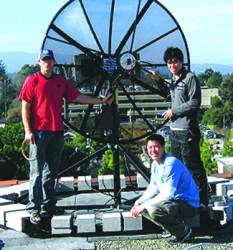I like the marketplace.
I really do.
I love the energy, the innovation, the diversity, the pricing mechanism of demand curves, the buyer-seller feedback loops, the promotional hoopla, the whole deal.
I like the marketplace.
I really do.
I love the energy, the innovation, the diversity, the pricing mechanism of demand curves, the buyer-seller feedback loops, the promotional hoopla, the whole deal.
In the rather remote town where I live, we have a Saturday Market that’s more than 30 years old. Every week a bunch of home-grown entrepreneurs set up their booths with pottery, tie-dyed shirts, fresh blueberries, metal sculptures, Guatemalan tamales, jewelry, everything imaginable. There’s colorful banners waving and musicians playing and aging hippies dancing.
And — just to let you know how far we are outside not merely the D.C. Beltway but outside the whole North American Free Trade Agreement zone — all the products sold in the market must be grown or made by the people selling them.
Of course, the market can’t do everything.
It apparently can’t produce enough bird flu vaccine to protect a nation or distribute enough food in the right place to prevent hunger in the midst of plenty. And one thing many people wouldn’t have expected the market to do was produce a multitude of global navigation satellite systems.
But it has, with GPS, GLONASS, Galileo, and perhaps even Beidou waiting in the wings.
And thank goodness for the marketplace, because it’s apparently going to take not merely a village, but a world to raise up a new generation of robust, modernized GNSS.
Fortunately, we have redundant programs, not merely redundant satellites. If one GNSS is delayed or changes its plan, another one is there to keep the parade moving forward. So, when Galileo sets itself hurdles, such as agreeing on not merely a concession contract but a business model as well, there’s GPS with its simple taxpayer-driven approach to keep things moving. And when GPS loses its way amid the engineering changes and chain-of-command silos of the military-industrial complex, there’s GLONASS speeding up its schedule in a race to the future.
Hopefully, by the time GLONASS encounters its next economic or technical or political challenge, Galileo and GPS will be back on track.
Yes, we definitely are in another “two-steps-forward-one-step-back” phase of GNSS development.
In an industrious and cooperative surge of activity, we have seen three sets of draft specifications reach fruition in the last few weeks: publication of a joint recommendation for design of new civil signals on GPS and Galileo, the Galileo Interface Control Document, and the GPS L1C interface specification.
Although further discussion and revisions are inevitable, these anxiously awaited items will provide guidance to GNSS product designers and encouragement to users.
Meanwhile, however, we once again have to wonder: what’s going on — or, more to the point, not going on — with the GPS program? In a short span of time, we’ve seen new delays in the first launch of a GPS Block IIF satellite (originally planned for 2005), a possible yearlong delay in GPS III, and a missed deadline for awarding an important contract on modernized user equipment for the Department of Defense (DoD) community.
Those developments underscore the need for implementing a recommendation in the Defense Science Board Task Force on GPS report: coordinate DoD responsibilities for GPS by designating a single focal point within the Office of the Secretary of Defense.
Currently, as with many other defense programs, the GPS program has three separate decision-making channels for acquisition, budget, and command. What in a well-managed organization might serve as supporting columns for a common endeavor have turned into self-contained silos sheltering processes, personnel, and purposes that become laws unto themselves. These parallel, non-convergent functions are producing asynchronous, discontinuous results.
Deputy Secretary of Defense Donald England has reportedly kicked the Positioning, Navigation, and Timing (PNT) Executive Committee meeting schedule into high gear; perhaps he’s the man to do the same for the PNT program itself.




